APC 2009 Annual Report Download - page 55
Download and view the complete annual report
Please find page 55 of the 2009 APC annual report below. You can navigate through the pages in the report by either clicking on the pages listed below, or by using the keyword search tool below to find specific information within the annual report.-
 1
1 -
 2
2 -
 3
3 -
 4
4 -
 5
5 -
 6
6 -
 7
7 -
 8
8 -
 9
9 -
 10
10 -
 11
11 -
 12
12 -
 13
13 -
 14
14 -
 15
15 -
 16
16 -
 17
17 -
 18
18 -
 19
19 -
 20
20 -
 21
21 -
 22
22 -
 23
23 -
 24
24 -
 25
25 -
 26
26 -
 27
27 -
 28
28 -
 29
29 -
 30
30 -
 31
31 -
 32
32 -
 33
33 -
 34
34 -
 35
35 -
 36
36 -
 37
37 -
 38
38 -
 39
39 -
 40
40 -
 41
41 -
 42
42 -
 43
43 -
 44
44 -
 45
45 -
 46
46 -
 47
47 -
 48
48 -
 49
49 -
 50
50 -
 51
51 -
 52
52 -
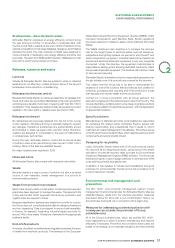 53
53 -
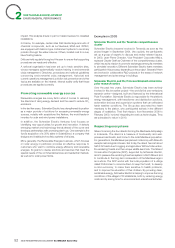 54
54 -
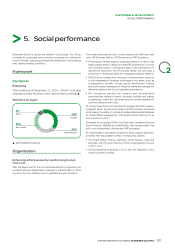 55
55 -
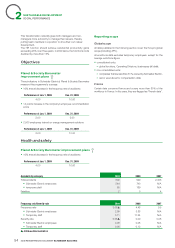 56
56 -
 57
57 -
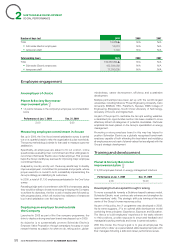 58
58 -
 59
59 -
 60
60 -
 61
61 -
 62
62 -
 63
63 -
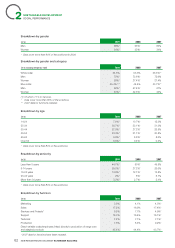 64
64 -
 65
65 -
 66
66 -
 67
67 -
 68
68 -
 69
69 -
 70
70 -
 71
71 -
 72
72 -
 73
73 -
 74
74 -
 75
75 -
 76
76 -
 77
77 -
 78
78 -
 79
79 -
 80
80 -
 81
81 -
 82
82 -
 83
83 -
 84
84 -
 85
85 -
 86
86 -
 87
87 -
 88
88 -
 89
89 -
 90
90 -
 91
91 -
 92
92 -
 93
93 -
 94
94 -
 95
95 -
 96
96 -
 97
97 -
 98
98 -
 99
99 -
 100
100 -
 101
101 -
 102
102 -
 103
103 -
 104
104 -
 105
105 -
 106
106 -
 107
107 -
 108
108 -
 109
109 -
 110
110 -
 111
111 -
 112
112 -
 113
113 -
 114
114 -
 115
115 -
 116
116 -
 117
117 -
 118
118 -
 119
119 -
 120
120 -
 121
121 -
 122
122 -
 123
123 -
 124
124 -
 125
125 -
 126
126 -
 127
127 -
 128
128 -
 129
129 -
 130
130 -
 131
131 -
 132
132 -
 133
133 -
 134
134 -
 135
135 -
 136
136 -
 137
137 -
 138
138 -
 139
139 -
 140
140 -
 141
141 -
 142
142 -
 143
143 -
 144
144 -
 145
145 -
 146
146 -
 147
147 -
 148
148 -
 149
149 -
 150
150 -
 151
151 -
 152
152 -
 153
153 -
 154
154 -
 155
155 -
 156
156 -
 157
157 -
 158
158 -
 159
159 -
 160
160 -
 161
161 -
 162
162 -
 163
163 -
 164
164 -
 165
165 -
 166
166 -
 167
167 -
 168
168 -
 169
169 -
 170
170 -
 171
171 -
 172
172 -
 173
173 -
 174
174 -
 175
175 -
 176
176 -
 177
177 -
 178
178 -
 179
179 -
 180
180 -
 181
181 -
 182
182 -
 183
183 -
 184
184 -
 185
185 -
 186
186 -
 187
187 -
 188
188 -
 189
189 -
 190
190 -
 191
191 -
 192
192 -
 193
193 -
 194
194 -
 195
195 -
 196
196 -
 197
197 -
 198
198 -
 199
199 -
 200
200 -
 201
201 -
 202
202 -
 203
203 -
 204
204 -
 205
205 -
 206
206 -
 207
207 -
 208
208 -
 209
209 -
 210
210 -
 211
211 -
 212
212 -
 213
213 -
 214
214 -
 215
215 -
 216
216 -
 217
217 -
 218
218 -
 219
219 -
 220
220 -
 221
221 -
 222
222 -
 223
223 -
 224
224 -
 225
225 -
 226
226 -
 227
227 -
 228
228 -
 229
229 -
 230
230 -
 231
231 -
 232
232 -
 233
233 -
 234
234 -
 235
235 -
 236
236 -
 237
237 -
 238
238 -
 239
239 -
 240
240 -
 241
241 -
 242
242 -
 243
243 -
 244
244
 |
 |

2009 REGISTRATION DOCUMENT SCHNEIDER ELECTRIC 53
SUSTAINABLE DEVELOPMENT
2
SOCIAL PERFORMANCE
Schneider Electric’s people are critical to its success. The Group
motivates its employees and promotes involvement by making the
most of diversity, supporting professional development, and ensuring
safe, healthy working conditions.
Framework
Key figures
Employees
Total workforce at December31, 2009: 104,853 (including
employees under fi xed-term and open-ended contracts) ▲
Workforce by region
8%
Other
25%
Asia - Pacific
43%
Europe
24%
North America
▲ 2009 audited indicators
Organisation
Enhancing effectiveness by transforming human
resources
With the deployment of the One Schneider Electric programme , the
Human Resources Department underwent a transformation in 2009
as part of the new strategic push to globalize support functions.
The human resources function is now organised to fulfi l three main
roles: HR Business Partner, HR Solutions and HR Operations:
•HR Business Partner supports business leaders on a day-to-day
basis, helping them to deploy and lead HR programmes . In touch
with business needs, it contributes daily to the achievement of
operational objectives. As HR process leader, the unit plays a
pivotal role in developing talent and managing employee relations;
•HR Solutions creates and develops comprehensive solutions
to the organisation ’s strategic challenges in key areas, such as
compensation, benefi ts, human capital development, training
and performance management. Regional teams are leveraged to
effectively shadow the Group’s globalized operations;
•HR Operations handles the logistics and administrative
responsibilities relating to payroll, sourcing, mobility and training
programmes , mainly through shared service centres designed to
optimise effi ciency and costs.
Of course, these three units are linked to a single information system,
bridgeHR , which structures and aligns all HR processes worldwide
while making it possible to compile an indispensable global database
for shared talent management. The system will be rolled out to all
host countries by 2011.
Underway since January2009 in the three main Operating Divisions
(North America, EMEAS and Asia-Pacifi c), this transformation has
led to more streamlined, standardized HR processes.
Its implementation has made it possible to deploy shared services in
countries with the greatest number of employees, namely:
•the United States, France, Germany, China, Mexico, India and
Australia, with the goal of serving 72,000 employees by the end
of 2011; and
•22,000 additional employees in 2012 with the integration of the
other European countries.
>
5. Social performance
